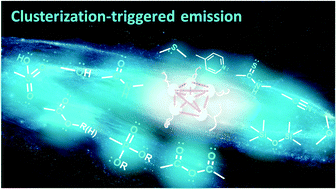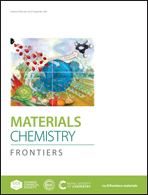Clusterization-triggered emission (CTE): one for all, all for one
Abstract
One for all and all for one, hand in hand turns the light on. Clusterization-triggered emission (CTE) is a photophysical phenomenon that has attracted increased attention in recent years. Highly efficient luminescence based on through-space conjugation (TSC) can be obtained due to the clusterization of non-conventional chromophore-forming clusteroluminogens with extended electron delocalization and a rigid conformation. The CTE process makes it possible to generate highly efficient light emitters from a vast variety of non-conjugated molecules. It is anticipated that CTE may bring about a revolution in the design of advanced functional luminescent materials in the future. In this review, we systematically summarize the current status of CTE studies, aiming at analysing the future development trends in this field. The following issues are discussed: (1) TSC hypothesis and experimental confirmation; (2) characteristics of CTE, including concentration-enhanced luminescence, excitation wavelength-dependent emission, room temperature phosphorescence (RTP) and polarization-enhanced luminescence; (3) typical examples of CTE systems, including biomacromolecules, multicolor luminescent polymers and organic–inorganic hybrid materials; and (4) applications of the CTE effect, including optical anti-counterfeiting, white LED materials, bioimaging, and molecular sensing. We envisage that the supramolecular self-assembly of CTE systems will become an important direction in the field of CTE research.

- This article is part of the themed collection: 2021 Materials Chemistry Frontiers Review-type Articles


 Please wait while we load your content...
Please wait while we load your content...